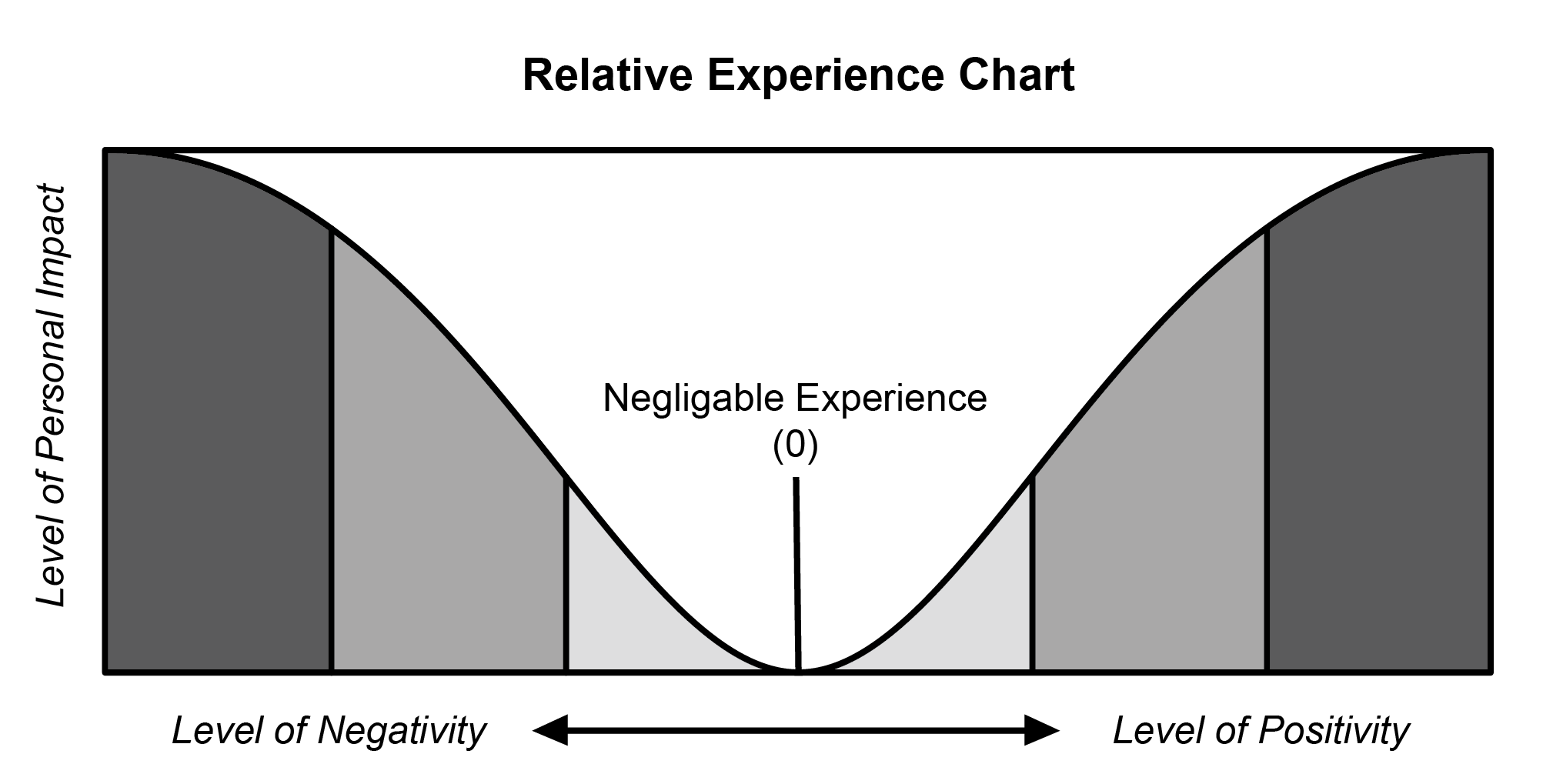B33
Public Record
Excerpt From article.
The Relative Experience Chart: A system for charting the human experience.
Overview: Important terms.
[…] At the outset, Ms. Schwinman and my work did not seek to assert anything new; this brand of philosophy probably already existed in some other form or described in some other way. What this work does aim to do, however, is to define some common terms and to offer insight into how humans process events as they occur and years after they’ve passed.
The most basic assertion for this idea is the belief that every person has essentially the same Relative Experience as every other person: one person’s “best experience” is not qualitatively better than another person’s “best experience,” nor is one person’s “worst experience” qualitatively worse than another person’s “worst experience.” These qualifiers are subjective to the person in them, and relative to the rest of that person’s total experiences. Thus, all individuals experience their life’s highlights and hardships somewhere between these two peaks of her or his best and worst experiences. Therefore, with these two experiences plotted, every individual’s experience can be placed somewhere on what we call the Relative Experience Chart, which looks like this:

This is the scale of how humans process experiences; every event can be plotted somewhere along this curve. Following the chart, an individual’s “most impactful positive experience” would be plotted in the top, right corner, and her “most impactful negative experience” would be plotted in the top, left corner of the graph. These two values determine the overall impact and quality of any proceeding event. These events are subject to change as new experiences occur, but their change is uncommon. Furthermore, when an event occurs which is more impactful than the existing “most impactful positive” or “most impactful negative” experience, that event does not create a higher value for “most impactful,” but instead replaces the current highest point, and therefore all values shift down respectively (e.g. this new “most impactful” experience merely replaces the current “best/worst experience,” which then becomes “second-best/worst experience,” then “second-best/worst experience” becomes “third worst,” and so on).
The event which is heaviest on the left side is called one’s “Great Tragedy.” Those heaviest on the right side are called one’s “Great Triumph.” These two events are crucial to a person’s idea of herself, and these memories are rehearsed and relived more frequently than any other events in one’s life. […] One’s Great Tragedy is the anchor point by which they create their perception of themselves. […] As more experiences occur, this phenomenon results in “impact deflation.” Using economic deflation as a model, Schwinman states that as valuable experiences continue to arise, the overall value of an experience tends to decline. […]
Wilmette Colfton-Fury & Heinza Schwinman